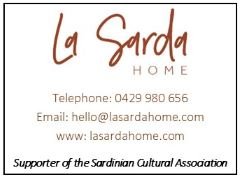"And so this is Easter"
/Whatever your beliefs are let’s wish for enjoyable family gatherings, and Peace in the world !
Following on from this Website’s most recent (2023) post, headed “And so this is Christmas”, we thought we would belatedly “kick-off” 2024 by proving the following overview of what is the origin of Easter, from pagan festivals and Christianity to bunnies and chocolate eggs.
“Rabbits and eggs have long been part of spring celebrations as symbols of new life, and on Easter Sunday a bunny will deliver chocolate eggs to many households across Australia.
Have you ever wondered how this seemingly bizarre tradition came to be? Well, it turns out Easter began as a pagan festival celebrating spring in the Northern Hemisphere, long before the advent of Christianity.
Since pre-historic times, people have celebrated the equinoxes (the time or date, twice each year, when the sun crosses the celestial equator, and day and night are of approximately equal length on about 22/9 and 20/3) and the solstices (the time or date, twice each year, at which the sun reaches its maximum or minimum declination marked by the longest and shortest days on about 21/6 and 22.12) as sacred times.
People mapped their whole life according to the patterns of nature, and following the advent of Christianity, the Easter period became associated with the resurrection of Christ.
In the first couple of centuries after Jesus's life, feast days in the new Christian church were attached to old pagan festivals. Spring festivals with the theme of new life and relief from the cold of winter became connected explicitly to Jesus having conquered death by being resurrected after the crucifixion.
Easter's changing date:
In 325AD the first major church council, the Council of Nicaea, determined that Easter should fall on the Sunday following the first full moon after the spring equinox. That is why the date moves and why Easter festivities are often referred to as "moveable feasts".
There's a defined period between 25/3 and 25/4 on which Easter Sunday must fall, and that's determined by the movement of the planets and the Sun;
Pascha, Easter and the goddess of spring:
In most countries in Europe, the name for Easter is derived from the Jewish festival of Passover. In Greek the feast is called Pascha, in Italian Pasqua, in Danish it is Paaske, and in French it is Paques.
But in English-speaking countries, and in Germany, Easter takes its name from a pagan goddess from Anglo-Saxon England – Eostre, who was described in a book by the eighth-century English monk Bede.
Eostre was a goddess of spring or renewal and that's why her feast is attached to the vernal equinox.
In Germany, the festival is called Ostern, and the goddess is called Ostara;
Rabbits and eggs as ancient symbols of new life:
Many of the pagan customs associated with the celebration of spring eventually became absorbed within Christianity as symbols of the resurrection of Jesus.
Eggs, as a symbol of new life, became a common people's explanation of the resurrection; after the chill of the winter months, nature was coming to life again.
During the Middle Ages, people began decorating eggs and eating them as a treat following mass on Easter Sunday after fasting through Lent.
This is something that still happens, especially in eastern European countries like Poland. The custom of decorating hard-boiled eggs or blown eggs is still a very popular folk custom. Rabbits and hares are also associated with fertility and were symbols linked to the goddess Eostre.
It has thought by many that the first association of the rabbit with Easter, was a mention of the "Easter hare" in a book by German professor of medicine Georg Franck von Franckenau published in 1722. He recalls a folklore that hares would hide the coloured eggs that children hunted for, which suggests to us that as early as the 18th century, decorated eggs were hidden in gardens for egg hunts;
Commercialisation, confectionery and greeting cards:
Commercialisation during the 19th century saw rabbits become a popular symbol of Easter with the growth of the greeting card industry. Postage services became affordable, and people wanted to stay connected with people.
Card companies like Hallmark became big by launching images of cute little rabbits and Easter eggs on cards.
The first edible Easter bunnies made from sugared pastry were made in Germany in the 19th century. Big confectionery companies, like Cadbury in England, started manufacturing chocolate eggs.
Chocolate that used to be something that's bitter and drunk became something that was sweetened and turned into a confectionery treat. Easter eggs were one of the areas of marketing for chocolates and today, chocolate eggs and egg hunts are a popular part of Easter celebrations around the world;
Easter in Australia today:
Australia's significant public holiday periods of Easter and Christmas are based on Christian European celebrations.
So, although autumn is in full swing, and winter is coming in the Southern Hemisphere, rabbits and eggs as symbols of spring remain part of Australian festivities.
On Easter Sunday, the Easter bunny will deliver chocolate eggs to children and there will be egg hunts in backyards and parks across Australia. Christian Australians will attend church services and most secular Australians will enjoy the four-day weekend feasting and relaxing with family and friends.
All the while, the chocolate bunnies and eggs serve as a reminder of Easter's ancient origins and Christian traditions”.
Whilst we are sure you have many more reasons as to why it is important to celebrate Easter, we trust the above has been of interest!
Editorial Team - Ref. Paolo Lostia/Penny Travers/Wikipedia/University of Sydney Professor Carole Cusack








